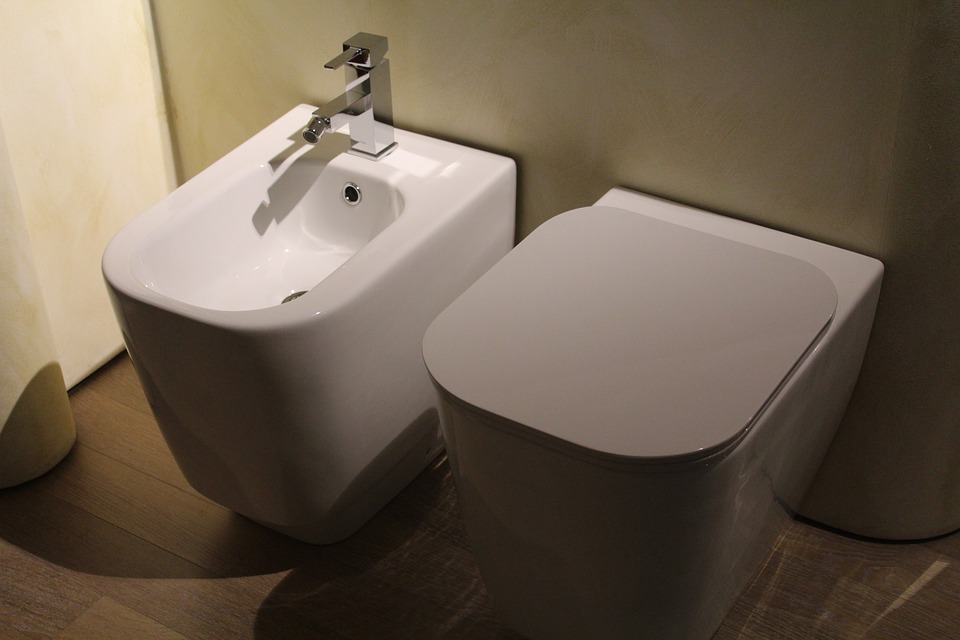Types of sanitary appliances
Contents |
[edit] Introduction
The Building Regulations Approved Document G: Sanitation, hot water safety and water efficiency suggests that the term ‘sanitary appliance’ means a ‘… WC, urinal, bath, shower, washbasin, sink, bidet and drinking fountain. It also includes appliances that are not connected to a water supply (e.g. composting toilet) or drain (e.g. waterless urinal).’
These appliances collect and remove waste matter. They are generally grouped into two categories: soil appliances and waste water appliances.
[edit] Soil appliances
Soil appliances remove different types of solid waste material. Examples of soil appliances include:
- Toilets or other types of water closets (such as squatting, composting, washdown, siphonic or universal).
- Bidets (either pedestal or wall hung).
- Urinals (bowl type, slab, stall, squatting, syphon jet or waterless).
- Slop sinks (found in hospitals and used for emptying and washing bedpans and urine bottles).
- Bed pan sinks (again, found in hospitals).
[edit] Waste water appliances
Waste water appliances are primarily used to collect and remove water once it has been used. Examples of waste water appliances include:
- Wash basins.
- Wash troughs.
- Sinks.
- Showers.
- Bathtub.
- Drinking fountains.
These appliances should have a durable, smooth, easily cleaned and non-absorbent surface. They are typically made of non-corroding material, such as ceramic, china, porcelain, enamelled cast iron or pressed steel, stainless steel, glass or specially treated plastic.
[edit] Related articles on Designing Buildings
- Approved Document G.
- Bathroom definition.
- Bath.
- Bidet.
- Earth closet.
- Gas fired toilet.
- Installed level access shower.
- Lavatory.
- Macerating toilet systems.
- Sanitary accommodation.
- Sanitaryware.
- Shower.
- Sink.
- Sink v basin.
- Solid surface wash troughs.
- Types of showers.
- Urinal.
- Wall hung toilet.
- Water closet.
Featured articles and news
RTPI leader to become new CIOB Chief Executive Officer
Dr Victoria Hills MRTPI, FICE to take over after Caroline Gumble’s departure.
Social and affordable housing, a long term plan for delivery
The “Delivering a Decade of Renewal for Social and Affordable Housing” strategy sets out future path.
A change to adoptive architecture
Effects of global weather warming on architectural detailing, material choice and human interaction.
The proposed publicly owned and backed subsidiary of Homes England, to facilitate new homes.
How big is the problem and what can we do to mitigate the effects?
Overheating guidance and tools for building designers
A number of cool guides to help with the heat.
The UK's Modern Industrial Strategy: A 10 year plan
Previous consultation criticism, current key elements and general support with some persisting reservations.
Building Safety Regulator reforms
New roles, new staff and a new fast track service pave the way for a single construction regulator.
Architectural Technologist CPDs and Communications
CIAT CPD… and how you can do it!
Cooling centres and cool spaces
Managing extreme heat in cities by directing the public to places for heat stress relief and water sources.
Winter gardens: A brief history and warm variations
Extending the season with glass in different forms and terms.
Restoring Great Yarmouth's Winter Gardens
Transforming one of the least sustainable constructions imaginable.
Construction Skills Mission Board launch sector drive
Newly formed government and industry collaboration set strategy for recruiting an additional 100,000 construction workers a year.
New Architects Code comes into effect in September 2025
ARB Architects Code of Conduct and Practice available with ongoing consultation regarding guidance.
Welsh Skills Body (Medr) launches ambitious plan
The new skills body brings together funding and regulation of tertiary education and research for the devolved nation.
Paul Gandy FCIOB announced as next CIOB President
Former Tilbury Douglas CEO takes helm.
UK Infrastructure: A 10 Year Strategy. In brief with reactions
With the National Infrastructure and Service Transformation Authority (NISTA).
























